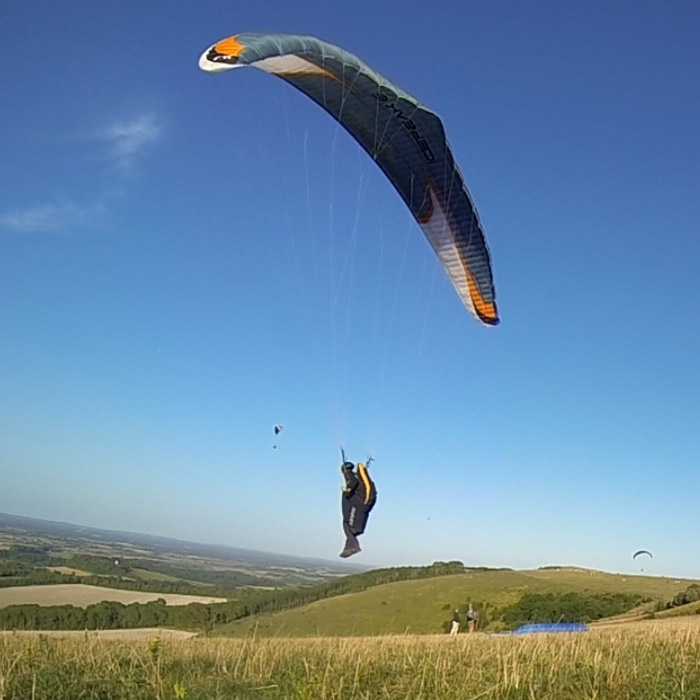
If approached incorrectly, inducing a stall can be dangerous, but so is flying without knowing where your stall point is.
We're all taught the basic principle in flying school:
Don't stall your wing, keep your speed up for all landing approaches, and never fly with heavy brakes.
That is a certainly generally good idea, especially when learning, but what happens in an emergency?
Emergencies can happen
Imagine that a child runs across your landing path. You hit the brakes instinctively...
But how much can you slow down? For how long?
What happens if your wing stalls?
Other emergency scenarios might be:
- You're top landing, but have overshot the safe zone and are about to fly into the cafe.
- Or you're doing a forced landing in the street, and you've just seen the telephone cable looped across your flight path.
- Or an unexpected thermal pushes you towards a motorway.
You need slow flight control, FAST!
Learn about your wing's stall point, safely
Prepare yourself by learning about your stall point.
You need a gentle slope free of obstacles, a steady wind of about 20 kph, and a pair of legs that dangle beneath you.
Being in a seated position for this (or any landing) will lead to crashing on your backside.

- Launch and glide 1-3 m above the ground (never higher than you'd want to fall).
- Flare and hold the flare, see how long it takes to stall (the first part of the stall brings you down gently).
- Repeat (always ensuring you don't stall the wing higher than you'd want to fall).
Experiment, gradually
Try adjusting your timing. See how this changes the wing's stall behaviour.
If you swoop at the ground then flare and climb, your wing will stall earlier as it has pitched slightly behind you already.
If you keep your wing vertically overhead it resists the stall for longer.
Refine your feeling of the limits
Once you're comfortable and consistent with timing the stall, try keep the wing low-flying as slowly as possible.
You'll know you're on the point of stall because the wing will begin to lose yaw stability, threatening to spin.
If you miss it, you'll be on your feet, or bum. Assuming you didn't do it too high, no harm done. Lesson learned.
Position matters
If you're in a seated position, when you are tipped to one side your natural reaction will be to lean on the hand on the dropped (stalled) side for balance … causing a spin.
If you're standing upright already, this won't happen.
'Butterfly landing' technique
If you release the brakes just before the stall point and rapidly reapply them, hold for two seconds then repeat, you can fly the wing very slowly yet retain just enough airflow over the wing to prevent a stall.
This is the ‘butterfly landing' technique.
Airflow tips
If the airflow is turbulent, your wing will stall sooner, so be careful when landing in constricted spaces.
Also be prepared to speed up as you drop into any wind shadow areas behind obstacles upwind of you.
Be in control, be safe
Being in control of your stall point is a vital skill for safe flying. By developing a good appreciation of what the wing feels like as it approaches the stall, you are better prepared for avoiding it during slow flight.
Finding Your Stall Point video
https://youtu.be/2lKCKAXre04
Brought to you by Flybubble
Like what we do? Want more? There's no better way to support our efforts than buying gear from us. We'll ensure you get great service! Choose from our great range AND enable us to do more to benefit the free flight community.
